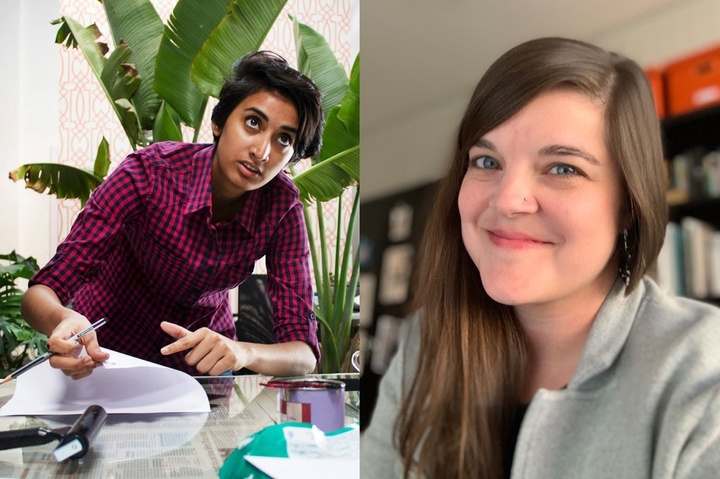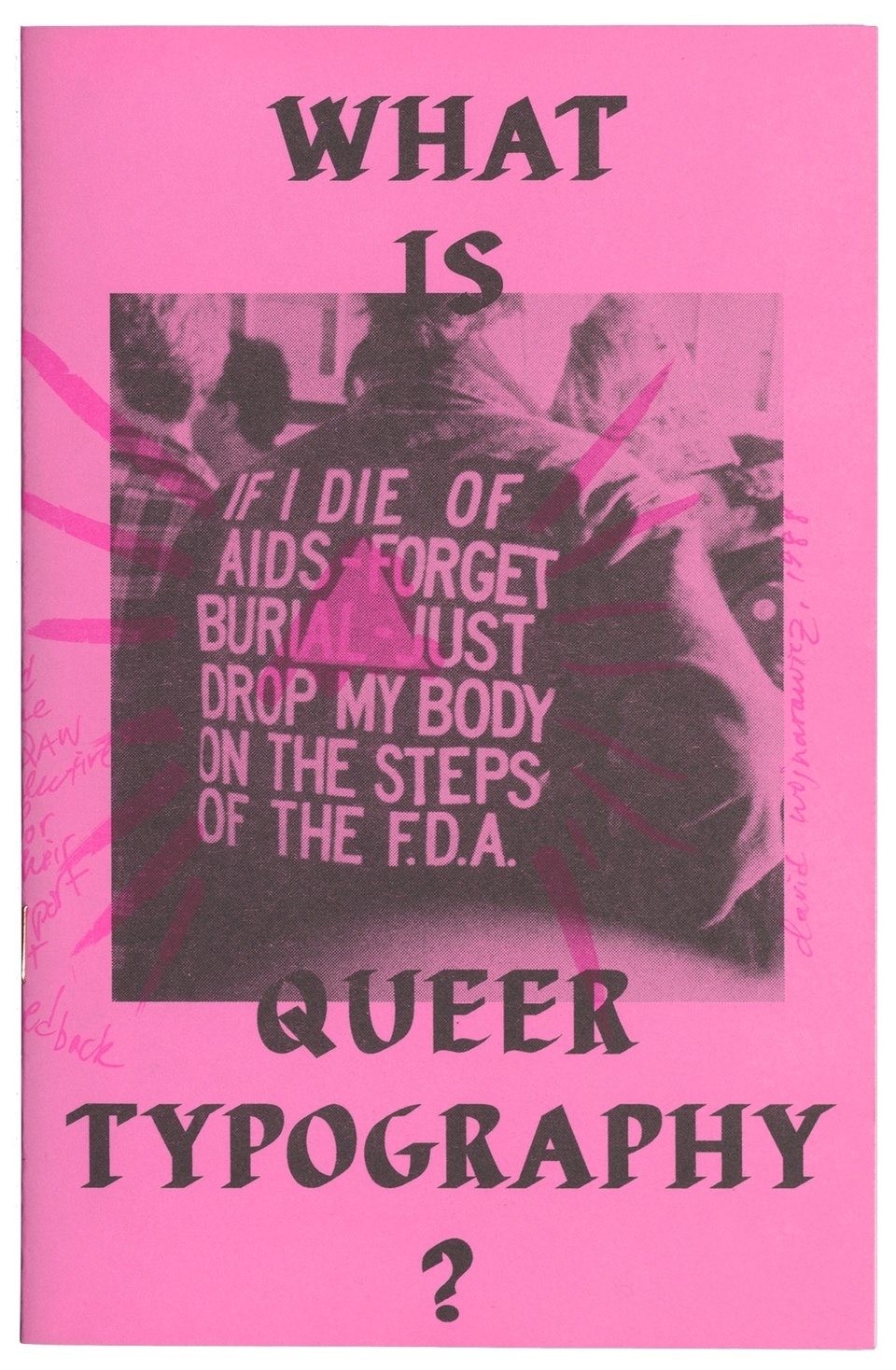TL;DR and the Case for Making as Research
2022-10-17 • Sam Fox School


Shreyas R Krishnan, assistant professor, and Aggie Toppins, associate professor and chair, undergraduate design, sensed they were prime for collaboration when they first met at the Sam Fox School of Design & Visual Arts faculty orientation in 2020. With their mutual passion for zines, they launched the TL;DR (too long; didn’t read) archive, a collection of DIY, small-batch publications that use design and illustration to explore visual culture and offer a resource scholarship.
The TL;DR collection is now on its first exhibition through Oct. 31, 2022 at the Maryland Institute College of Art, the alma mater of Krishnan and Toppins. A printed catalog is currently available, and a virtual catalog is forthcoming.
In this Q&A, we explore their goals for the project, the case for making as research, and the continuing relevancy of zines in today’s digital age.
What exactly is included in the TL;DR archive?
TL;DR is a collection of zines about design and illustration in formats that are designed and illustrated. Topics include graphic design and illustration history, design writing and pedagogy, typography, activist approaches to practice, and essays on visual culture. We attempted to differentiate our collection while serving the Sam Fox School and the broader academic community who may use this archive for research. Our call for submissions allowed for finished work or proposals for new work; one of our goals was to use this project to create opportunities and cultivate creative work.
The archive now consists of three copies each of 75 zines. One copy of each zine is archived at the D.B. Dowd Modern Graphic History Library, one copy is part of the traveling TL;DR Zine exhibition, and one copy of each will be housed in a reading room at the Sam Fox School; that location is yet to be determined.
What have been some of the challenges in developing this project?
There have been many. Skye Lacerte and Joy Novak at the D.B. Dowd Modern Graphic History Library were generous in guiding and advising us through some of the practical logistics of this project, like having a collection mandate, understanding specifics of cataloging, and how institutional archives work.
A huge part of curating a zine archive at an academic institution was negotiating the fact that we were institutionalizing anti-institutional materials. Zines are counter-cultural and some aspects of zine making are inconsistent with academic culture. For example, zine culture is inclusive and open but academic culture is about competition and selectiveness. We challenged ourselves to make criteria for TL;DR based on the conceptual positioning of the collection, not on value-based exclusions or rejections of the kinds of knowledges produced by zine communities.
You recently presented a paper on the TL;DR zine archive as a site of transgressive scholarship. Tell us about that.
While we both value and participate in the rigors of academic publishing, with the TL;DR archive, we are responding to the lack of spaces in academia for illustrators and designers to cultivate work “in their own language,” so to speak—a language in which images are more than just illustrations of texts but, to cite our paper, “intellectual propositions” in their own right.
Our terminal degrees taught us to make. Our professional fields value making. But institutions often value writing about making. So, making and writing about making seem to be distinct territories. We positioned the zine and the TL;DR archive as a transgressive form of scholarship because it crosses those borders and relocates knowledge production in our fields to the territory of making. It’s a case for making as research.
Zines are also “feral,” as we said in our paper. They resist standardization and categorization—this is part of what makes them exciting. Each of the zines in our collection look nothing like the other and frequently tackle more than one category of content, and in that process, they challenge institutional logic of what qualifies as scholarship.
Both of your practices engage with pressing social issues: women’s rights, gender equity, race & ethnicity, voting rights, health and well-being. How do you think design and illustration can move the needle?
Toppins: This is an ongoing question in my career, and one that I may have only a provisional answer for. It’s my belief that design and illustration are culturally significant because we are trained in the symbolic and representational layers of human experience. Design and illustration do not directly feed the hungry, heal the sick, or end injustices, but they can support those causes with certain material interventions, by broadcasting information, or by creating desire for and around ideas.
Krishnan: This is a big question, and I’m not sure I can capture it in one answer—maybe I need to make a zine about it. But I’ll try to add more to Aggie’s response.
When done with care and nuance, illustration and design help a great deal in making the complex accessible. The “complex” here could be how social structures or systems work, how people might equip themselves to navigate or resist these systems. A huge part of this involves working with and supporting other people, which I find on a personal level, is also an opportunity for us as creatives to embrace humility and learn about the world through design and illustration.
There is also a cyclical relationship between our understanding of social issues and the images that we make about them: they inform each other in ways that trace a history that we can continuously learn from. This is important to account for so that we are not simply making quick viral images in order to generate attention and not actual impact. An example is the return of the wire hanger on protest posters after the Dobbs verdict, and the pushback from reproductive justice workers on why, despite being an image that had relevance pre-Roe and being an arresting visual, is actually harmful for abortion access discourse today.
Zines, pamphlets, and posters, have a long history of affecting social change. What is the currency of this kind of physical form in the digital age? (Or, if zines wrestled Twitter, who would win?)
Zines would win, obviously!
Zines emerged out of counter-cultural discourses in the 20th century: from science fiction to punk music to queer and feminist politics. But it isn’t the zine or the pamphlet that has affected social change so much as the communities of people who make them. Zines remain a vital part of cultural life today because there are still counter-cultural discourses.
Ten years ago, students and colleagues might not have known what zines were, or think zines disappeared in the 1990s. Now, most people in our world know what a zine is. Why the resurgence? Some factors are that it’s now so affordable to make high quality DIY publications, and the Internet makes it easy to build an audience around zines, sell, and distribute them.
But also, the Internet stopped being an unfettered land of expression with Web 2.0 and became a corporate-owned social mediascape. Zines may be a material response to that shift. People still make zines because people still seek to build community and find ways to make their voices heard through their own media channels. These publications give us time to immerse in, question and contemplate their messages. They also off the “big data radar.” They may not reach the whole globe like social media does, but you can make an edition of 50 zines and, using social media to promote it or a web site to take orders, send copies all over the world.
What is the latest news from TL;DR?
We are so excited that we just sent TL;DR to its first big exhibition at the Maryland Institute College of Art (MICA), Baltimore, which will run through Oct. 31, 2022. The exhibition also features zines that we curated from MICA’s Decker Library collections and contributions by MICA students and alumni. We see this as an ongoing project. We hope to have more shows and launch more collecting initiatives in the future.
Will you make a zine about creating the TL;DR zine archive? (Please say yes.)
Yes! The call for zines for our second round of acquisitions was designed to be a printed one-sheet zine. Our 2022 catalog for the TL;DR Zine Archive and Exhibition is very “ziney.”
To learn more about TL;DR, visit the website, or follow the project on Instagram and Twitter.











